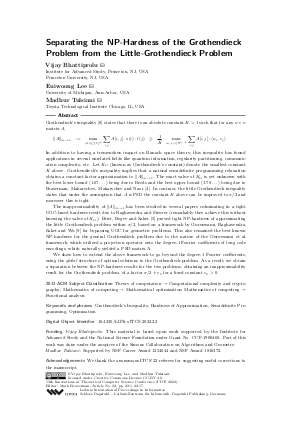LIPIcs.ITCS.2022.22.pdf
- Filesize: 0.79 MB
- 17 pages

 Creative Commons Attribution 4.0 International license
Creative Commons Attribution 4.0 International license























Feedback for Dagstuhl Publishing